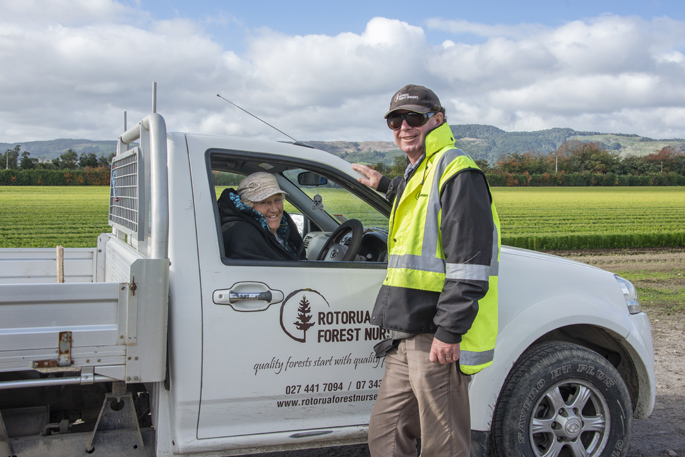When Peter Harington bought Rotorua Forest Nursery last year he hit the ground running, doubling previous production to an estimated nine million trees this season. This sudden increase in demand for radiata pine seedlings was partly due to the Government’s One Billion Tree programme.
Peter brought 40 years of experience in forestry to his new venture, including 30 years spent managing forest nurseries.
Most recently he was involved in leading edge forest nursery research while manager of the Scion research nursery. This research into nursery practises and how they impact on early growth and survival in the forest, the importance of a healthy soil biota and requirements of radiata pine with mycorrhiza, beneficial bacteria and Trichoderma.
But he’s completely pragmatic about his reasons for business purchase. A deteriorating visual impairment was stopping him from gaining employment.
“It was either buy a business myself or continue working, or resign myself to listening to national radio and daytime TV for the rest of my life,” says Peter.
The business came with two much-valued full-time staff. Operations manager Mandy Spence has been there 12 years and Caine Easthope is completing his apprenticeship in horticulture while working. Mandy has fond memories of her seasonal work at the nursery as a teenager.
In September around 20ha are prepared and fertilised for 15 days of using a vacuum drum, precision sower to sow the rows of 400m to 500m-long beds.
“The radiata pine seed used is fourth generation New Zealand-bred, and genetically superior through selective breeding since 1950,” says Peter.
Fast-growing, disease-resistant, straight trees with stable and strong wood is the desired combination.
During summer, Peter, Mandy and Caine run the nursery, monitoring things carefully. The seedlings are fertilised and sprayed as required. The trees are mainly grown to order for farmers, and forestry companies “plus some for later orders”.
“During autumn we condition the plants for dispatch, toughening them up ready for forest planting with just a ball of roots.”
Roots are undercut 10cm-12cm below the surface, then laterally between rows, and finally topped to 32cm. From June, the staff roll swells to 20, and the nursery is very busy as each seedling is hand-lifted, graded and boxed.
“We never have a problem getting the seasonal staff,” says Peter. “Our workers are usually Kiwis, and many spend the rest of the year working in tourism or the kiwifruit industry; this is their way of life.”
There is good money to be earned with workers paid by each box of 100 they lift – and, as Peter says: “The most important ingredient to growing good trees is people”.



0 Comments
Leave a Comment